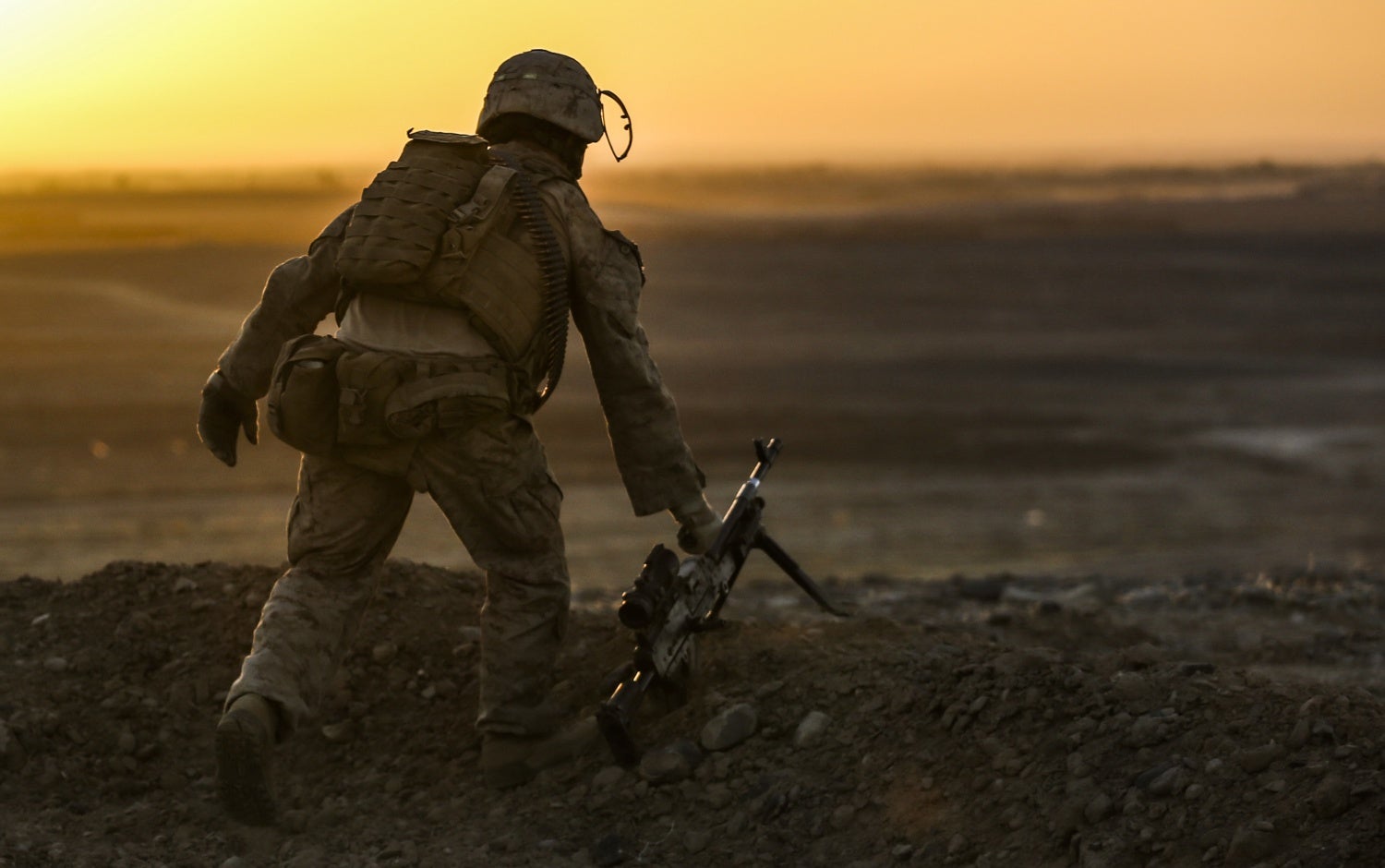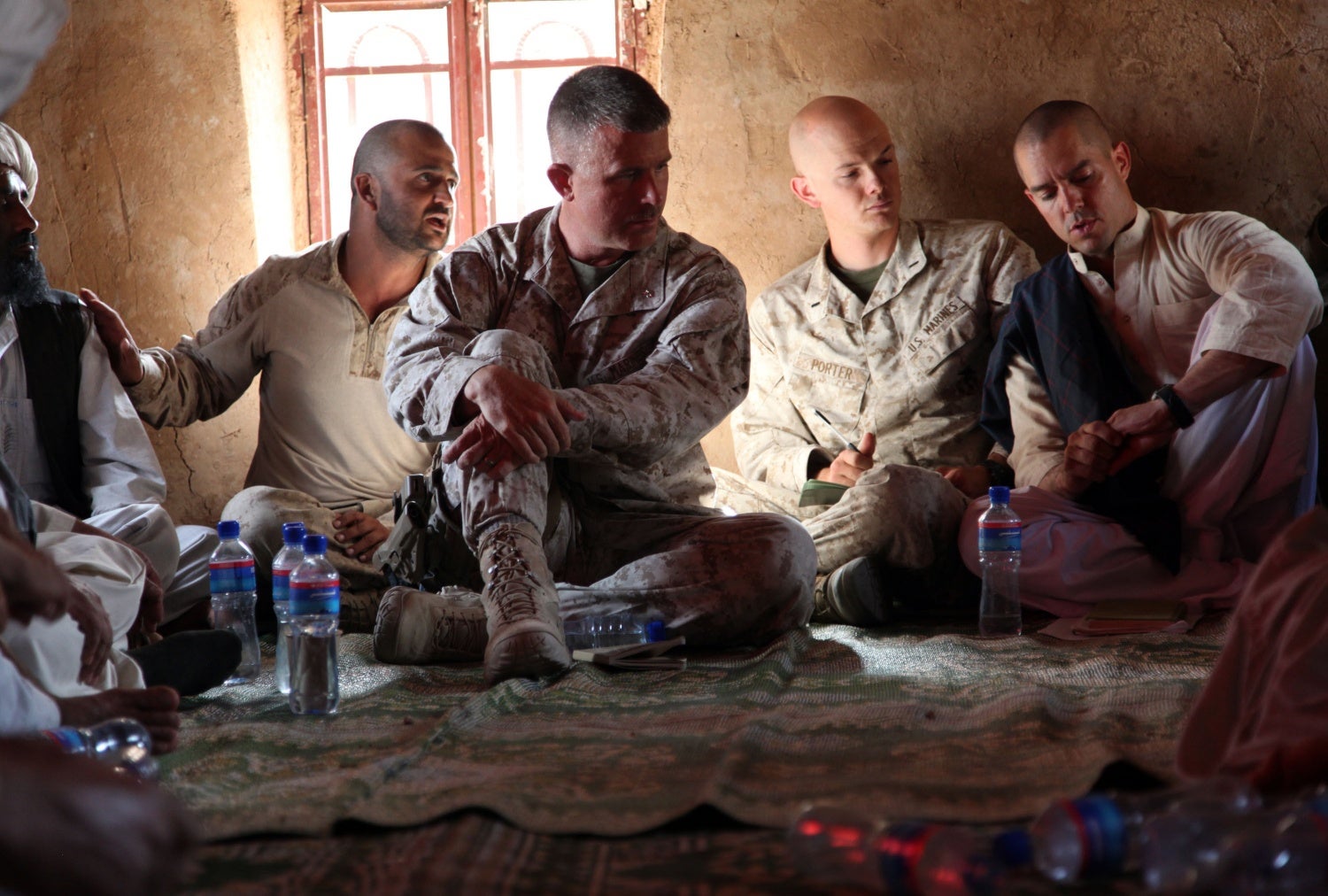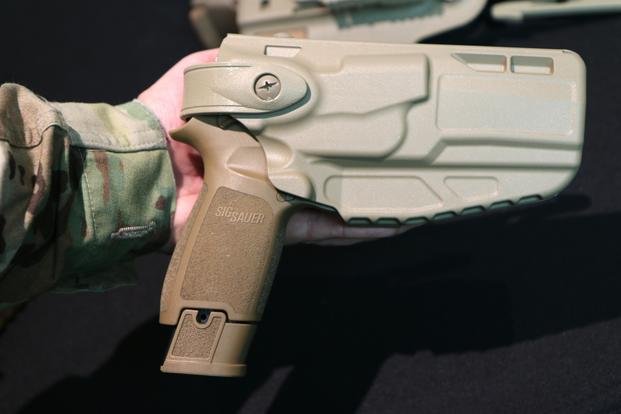Two important decisions by the Army have stood out among the recent news of the M17 handgun starting to replace M9s throughout armories service-wide. First, is the news that within the Army Infantry, the handguns will be issued down to team leaders. Second, is the choice of a holster with the Safariland 7TS. Both of these decisions could be crucial to how the new handgun is perceived by soldiers, and more importantly, affect how it is utilized.
Strategic Corporal
Issuing handguns to a team leader level, throughout the entire Infantry, is setting a precedent that infantry communities throughout the world might look very closely at. Previously sidearms have mostly been within the realm of officers and staff NCOs, extending to various specialists such as snipers, machine gunners, and other particular jobs throughout the Army. These troops are either operating a weapon system that cannot readily be used for self-defense (M40A5, M240), or have a job capacity that puts them in positions where carrying a primary rifle is a hindrance to their job but they still need to have a means of self-defense (EOD operator investigating an IED, an officer inside a village Shura, Jirga, or Key Leader Engagement).
These positions that require handguns will stay the same, and simply have their M9s replaced by M17s. However what is going to change is that infantry squad leaders and team leaders are now going to be armed with sidearms as well as their personal weapons. One of the NCOs at the 101st ABN M17 range shoot hinted that “When I need to go into a confined space, negotiate some battlefield task where one of my hands is busy, I need something I can engage the enemy with one hand,”.
From a MOUT standpoint, yes there is a very useful need to have a handgun when clearing very confined spaces. One can draw a handgun and clear a closet instead of becoming vulnerable with a long rifle barrel that could give away one’s presence or even be used to wrestle a soldier down. But this is only applicable if every soldier in the stack has a primary and secondary weapon system, not when just the team leader has it. So unfortunately in this particular case, the team leader speaking is wrong.
Where I think this is really going to play into effect is in pushing leadership down to the squad and team level. If anything that OIF and OEF have taught us, it’s that in a decentralized counterinsurgency campaign where individuals on both sides can have strategic implications, the burden of responsibility has been greatly shouldered by those young Corporals and Sergeants leading foot patrols in Iraq and Afghanistan, day in and day out. For a more detailed perspective on this, read The Strategic Corporal. From an administrative angle, these team leaders and squad leaders are sitting down, drinking chai with village elders, often in private settings where the squad has to stay outside of a mud hut in Helmand. Having the ability to still be fully armed while conversing beats having an M4 “nearby” that would be difficult to bring to bear in a close quarters situation.
In the COIN or even humanitarian warfare that the infantry is most likely going to face in upcoming years, team leaders and squad leaders are going to be playing roles that officers routinely took the lead in during previous conflicts (and thus requiring similar small arms that officers have). Infantrymen are increasingly finding themselves in forward positions, isolated from large support elements. Sometimes all some units have are a reinforced squad at a patrol base, operating on their own within the local populace for months at a time. Having the ability to be constantly armed (similar to a Law Enforcement entity) becomes increasingly vital to the success of the mission, especially in those leadership positions.
This is just from an administrative example, but it can also be useful from a practical necessity. An often mentioned word of wisdom about combat leadership is that an officer’s/squad leader’s/team leader’s primary weapon isn’t his M4, but instead his radio or his platoon/squad/or team. An M4 at that point is simply a self-defense tool, or at best merely supplementing the fire support of that element.
With that in mind, we could even see this from a logistical angle. A squad can have at most 3 extra M4s that can be given up if rifles in that particular squad suffer catastrophic malfunctions and need to be replaced immediately while in a firefight. That frees up the squad to keep fighting.

This Infantryman needs something other than a 240B to protect himself if the machine gun goes down. In addition, you can’t exactly clear rooms with a 240B.
Having the flexibility of a sidearm at that lower level can also be added value to the mission. Many times I knew of smaller units or sections where it rated a certain number of sidearms, the reigning Staff NCO decided they would be better used by a certain member of the team, and thus assigned sidearms to them. Now that mounted operations are often incorporated into infantry operations today, with individual teams and squads being assigned vehicles, this gives a team leader or squad leader the flexibility to arm his turret gunner with a sidearm whereas before he would have had a bulkier M4 up in the turret. Or as another example, giving the squad’s IED sweeper, or maybe even the UAV operator (if this becomes a reality) within the squad a handgun to carry. Even more important, maybe a squad wants to bring out a 240 on a patrol. Instead of the machine gunner leaving behind his M4 (or bringing the extra weight), he can simply take his team leader’s sidearm.
Modular Safariland Holsters
The Marine Corps, as well as the Army, jumped on the Black Hawk! SERPA bandwagon many years ago, and have been faithful users of the holster system that can be belt, thigh, cross draw, or even plate carrier mounted. Although some might praise the Black Hawk! SERPA system, many have found numerous issues with it. From the placement of the trigger release (even fooling Guns & Ammo writers) to the mechanics of the release mechanism itself. On the other hand, Safariland has slowly crept into the Law Enforcement market over the years, making holsters for folks whose primary weapon system tends to be a sidearm. Safariland solved the active retention conundrum many years ago with the ALS system, and even before that with their hooded release SLS system. Both make extensive use of a quick thumb break technique that excludes the trigger finger completely.
The particular holster that the Army chose was the 7TS, not Safariland’s more expensive Cordura wrapped 6354 series (or similar). It appears that it is coming with one of the companies two options, either a thigh-mounted rig or a low ride belt mount. Of these two options, the low ride belt mount is probably the better pick for soldiers who are actually using the holster on a daily basis. Thigh mounted holsters resulted from difficulties in the 1970s and 1980s with body armor that prevented anything being mounted on a belt. They seem like a good idea at first, but they tend to turn into more of an opportunity for things to go wrong instead. As an example, I’ve seen so many people who have them mounted too low on the thigh, too loose, even completely turned around on the leg. For more reading on why drop-leg/thigh mounted holsters are a horrible idea, read this article on Military.com.

Already starting off on the wrong thigh. This setup is actually using a Black Hawk! drop leg mount and SERPA QD mount.
Right now the Army is looking at the possibility of a light (maybe an RMR too in a decade?) for the M17, which would mean that an appropriate light bearing holster would need to be fielded. One of the biggest crutches of the SERPA was the ability to mold a holster for a light bearing handgun was very difficult. Black Hawk! did make a SERPA that was light bearing, but it was only fitted to a certain light that Black Hawk! produced. With Safariland, the Army doesn’t have to be beholden to a particular light as long as it fits in the general dimensions of a light bearing 7TS.
Statements from Daryl Eastlick of Fort Benning have suggested that the Army is looking to field a light/infrared laser device to be coupled with NVGs for a night capability. I think this might be going too far for a general issue handgun, and most likely won’t come to fruition. With the exception of close combat and fierce fighting in Iraqi cities (Fallujah, Ramadi) very few combat engagements in the past several decades of conventional infantrymen at war have come within optimal handgun engagement distance (5-25 meters). A holster choice that does seem to be an excellent path to head down is a concealment option that the Army is also exploring for the M18.
In conclusion, both of these enhancements to the service pistol are going to be looked at with increasing interest from the small arms analysis side, and more importantly those being affected by them as well. We will be paying close attention to both at TFB.
 Your Privacy Choices
Your Privacy Choices



